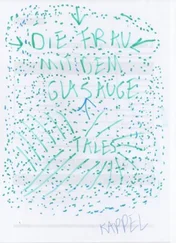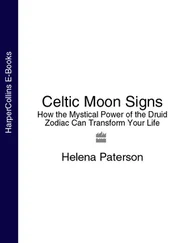Jodorowsky, Alejandro - Psychomagic - The Transformative Power of Shamanic Psychotherapy
Здесь есть возможность читать онлайн «Jodorowsky, Alejandro - Psychomagic - The Transformative Power of Shamanic Psychotherapy» весь текст электронной книги совершенно бесплатно (целиком полную версию без сокращений). В некоторых случаях можно слушать аудио, скачать через торрент в формате fb2 и присутствует краткое содержание. Год выпуска: 2010, Издательство: Inner Traditions Bear & Company, Жанр: Старинная литература, на английском языке. Описание произведения, (предисловие) а так же отзывы посетителей доступны на портале библиотеки ЛибКат.
- Название:Psychomagic: The Transformative Power of Shamanic Psychotherapy
- Автор:
- Издательство:Inner Traditions Bear & Company
- Жанр:
- Год:2010
- ISBN:нет данных
- Рейтинг книги:4 / 5. Голосов: 1
-
Избранное:Добавить в избранное
- Отзывы:
-
Ваша оценка:
- 80
- 1
- 2
- 3
- 4
- 5
Psychomagic: The Transformative Power of Shamanic Psychotherapy: краткое содержание, описание и аннотация
Предлагаем к чтению аннотацию, описание, краткое содержание или предисловие (зависит от того, что написал сам автор книги «Psychomagic: The Transformative Power of Shamanic Psychotherapy»). Если вы не нашли необходимую информацию о книге — напишите в комментариях, мы постараемся отыскать её.
Psychomagic: The Transformative Power of Shamanic Psychotherapy — читать онлайн бесплатно полную книгу (весь текст) целиком
Ниже представлен текст книги, разбитый по страницам. Система сохранения места последней прочитанной страницы, позволяет с удобством читать онлайн бесплатно книгу «Psychomagic: The Transformative Power of Shamanic Psychotherapy», без необходимости каждый раз заново искать на чём Вы остановились. Поставьте закладку, и сможете в любой момент перейти на страницу, на которой закончили чтение.
Интервал:
Закладка:
Let’s continue. Give me other examples.
A young man complains of “living in his head.” He explains that he is unable to “take hold of reality” and to “advance” in the direction of financial autonomy. I take his word for it and advise him to find two pieces of gold and paste them to the soles of his shoes—he’ll walk on gold all day! This should allow him to leave his head, put his feet in reality, and advance. In this example, I took hold of the terms used by the client himself.
I would also like to tell you of an act that involved my eldest son, Brontis.
I’m listening.
Brontis, at seven years old, played in my film El Topo. Before I tell the story, some clarifications need to be made. First of all, Bernadette, his mother, never really lived with me. When he was conceived, I had believed myself sterile. My father hated his own father and never signed his name “Jodorowsky.” Not having any desire to carry on the family name, he had succeeded in convincing me in a subtle way that I would never have children and that I was thus the last Jodorowsky.
An actress with whom I was working said to me one day that she was convinced of my fecundity, to which I replied that procreation was not part of my destiny. We ended up sleeping together and, some time later, she announced that she was pregnant by me. Trusting her and knowing then that this child was definitely mine, I went through a kind of intimacy revolution, both inside and outside. The woman with whom I had been living had left, and I found myself alone, faced with this responsibility for which I was not prepared at all. I accepted the coming of the child—abortion was ruled out—but I felt that I would be handicapped for a very long time filling the role of father. In addition, I did not have resources, and I could not really lend any financial support to the woman and her child, although at Brontis’s birth, I did give him a teddy bear. A while later, this actress went to work in Europe and took the child with her. Six or seven years later, although I told this story in La Trampa Sagrada, I went through a deep awakening and made contact again with the mother of my son, telling her that I would from then on earn a good living and that she could, if she wanted to, send Brontis to me. He arrived with his teddy bear and a photo of his mother. I then decided to have him play in El Topo. Here’s how the film begins: I arrive playing a flute. I am accompanied by a little boy, and I tell him solemnly, “Now, you are seven years old; you are a man. Bury your toys and your mother’s picture.” The child does it, buries the teddy bear in the sand, putting the photo in the hole with it. After the filming, we moved away together.
As the years passed, I realized that Brontis and I were communicating badly on the spiritual level. I had to admit that I had committed errors, and I sought to repair them. Brontis had often spoken of the toy that I asked him to bury when he came to live with me. That teddy bear was his very first toy, the one that I had given to him at his birth, before we were separated from one another for seven years. After the filming finished, we did not go back to get the teddy bear that Brontis had buried in the sand according to my script. I realized that I had brutally cut him off from his childhood and from his mother. After burying the portrait next to the toy, he did not speak again about Bernadette and quit writing to her. Later, he made this confession: “I did not suffer, because I imagined that the ants would go to live inside the teddy bear, that it would be their home.” This thought was what had consoled the child at the time. One day, a long time after, when Brontis was twenty-four years old, I imagined a new act to repair the old act. On his birthday, I told myself, “I am going to bury a teddy bear in our garden and cover it with sand beside a picture of his mother.” Then I put on a black hat, similar to the one I wore in El Topo, and asked Brontis to disrobe and come to the garden—in the film, the child was naked—to dig up the teddy bear and the photo. I made these remarks to him: “Today, you are seven years old, and you have the right to be a child. Come dig up your first toy and the portrait of your mother.” When I decided to carry out the act, I came across some stumbling blocks. My idea had been to buy a teddy bear as similar to the first one as I could find. It had been a hard toy, filled with straw. But the industry had progressed, and all the teddy bears are now soft and flexible. So the old rigid teddy bear turned into a beautiful, supple, delicate teddy bear. As for the photo, the one that Brontis buried when he was seven years old was in black and white; but when I looked for a picture of his mother to use in the act—she had perished in an airplane accident—I only found one in color, so that having buried a gray snapshot, my son would dig up a colored image. These modifications, caused by “coincidence,” greatly contributed to the act’s success. What I want to tell you is that the stumbling blocks, the elements that one cannot control, also play an important role in Psychomagic. It is appropriate to try hard to accomplish a prescribed act following the given instructions and in the best conditions, but once one finds oneself in the situation, unpredictable incidents and other changes independent of our will become part of the process. In El Topo, I sheltered Brontis under a black parasol to protect him from the sweltering desert sun. The day when, here in Vincennes, we accomplished the act, it rained, so that I had to shelter him under a black umbrella. He did not really know what I was going to do, but he suddenly understood when he saw me imitate the clippety-clop of the horse and make like I was on my horse with him behind. He climbed on my back, and we went through the rain to the place where I had buried the teddy bear. He told me, curiously, “Today, I did not take the umbrella. I knew you would wait for me and shelter me,” as if he had sensed what was going to happen. He dug up the teddy bear and the colored photograph of his mother, we fell into each other’s arms, and he cried for a long time with his head on my shoulder, cries of gratitude, like a child full of tenderness. From that day forward, he decided to mail a poem to me every day. Since that time, I have received some text from him every day. I keep these poems in a special box. I have to say that the communication between us is much better. As I speak to you now [1993], he is thirty years old, and we have a really beautiful relationship.
That is a very beautiful story. Through this act, you voluntarily overturned a difficulty from his childhood.
Yes, but in just the right way. I took the same elements associated with a negative emotional charge and breathed a positive charge into them. And in so doing, I also paid my own psychological debt.
SEVEN

PSYCHOMAGIC LETTERS
Once an act is completed, you told me, the only payment you ask is that the client sends you a letter reporting the execution of the act. I would like to have specifics on the subject of this psychomagic mail.
I demand this letter for two reasons: the psychomagic act, having all the characteristics of a dream, is very quickly forgotten if one does not put it immediately to paper; and what one receives must be shared. The best way to show retribution to a therapist is to report back on one’s healing, the result of the therapist’s efforts. It is a great sign of spiritual health to know how to thank. These letters are an integral part of the psychomagic act. They sanction and conclude it, so to speak.
Читать дальшеИнтервал:
Закладка:
Похожие книги на «Psychomagic: The Transformative Power of Shamanic Psychotherapy»
Представляем Вашему вниманию похожие книги на «Psychomagic: The Transformative Power of Shamanic Psychotherapy» списком для выбора. Мы отобрали схожую по названию и смыслу литературу в надежде предоставить читателям больше вариантов отыскать новые, интересные, ещё непрочитанные произведения.
Обсуждение, отзывы о книге «Psychomagic: The Transformative Power of Shamanic Psychotherapy» и просто собственные мнения читателей. Оставьте ваши комментарии, напишите, что Вы думаете о произведении, его смысле или главных героях. Укажите что конкретно понравилось, а что нет, и почему Вы так считаете.












